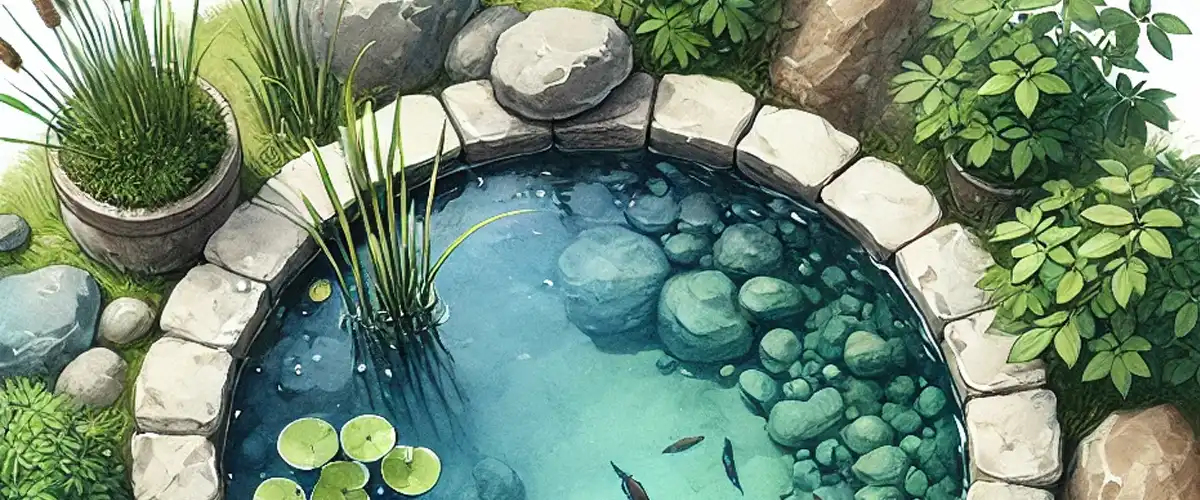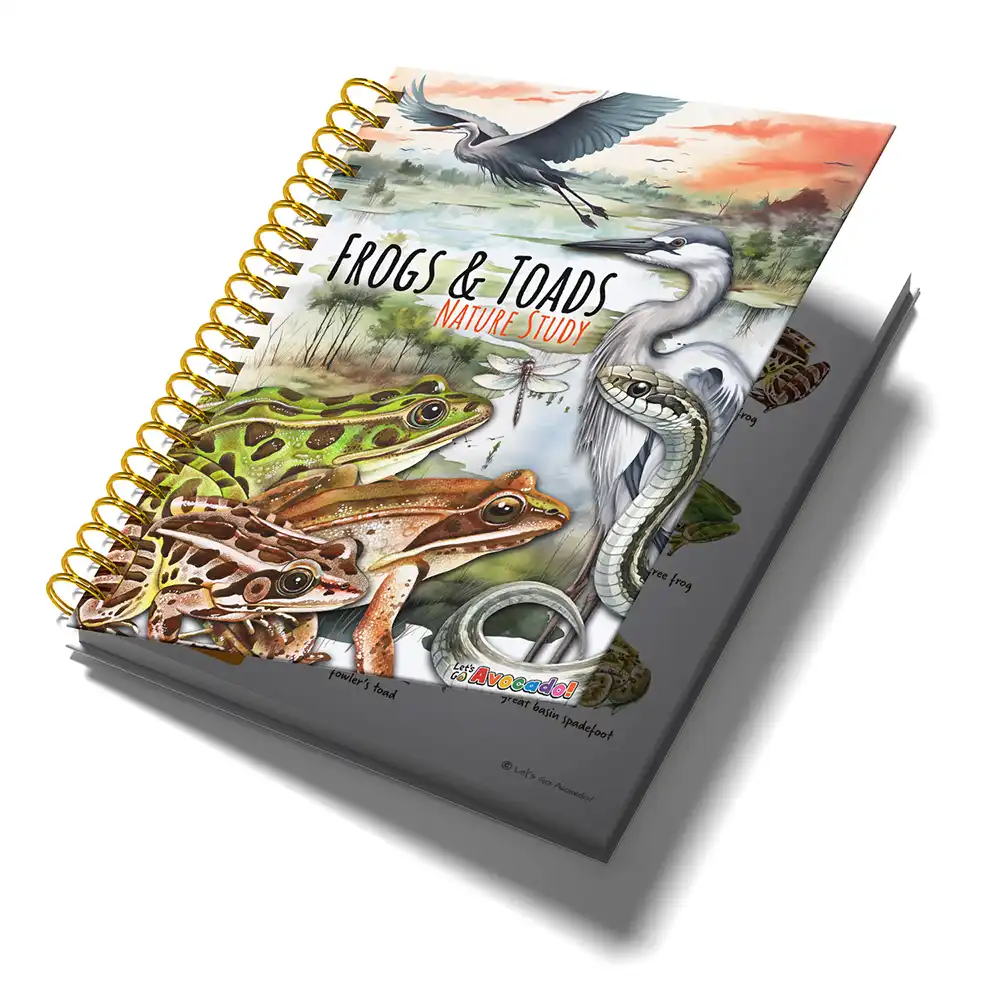This page may contain affiliate links.
Read our disclosure and privacy policy here.
Building a wildlife pond in your backyard is an awesome project for kids! It’s a fun way to get your hands dirty, learn about nature, and see cool animals and insects up close. Imagine having frogs, dragonflies, and birds right in your own backyard! This project will make your outdoor space super exciting and full of life.
Table of Contents
Fun Family Project: Build a Wildlife Pond & Watch Your Kids Learn About Nature
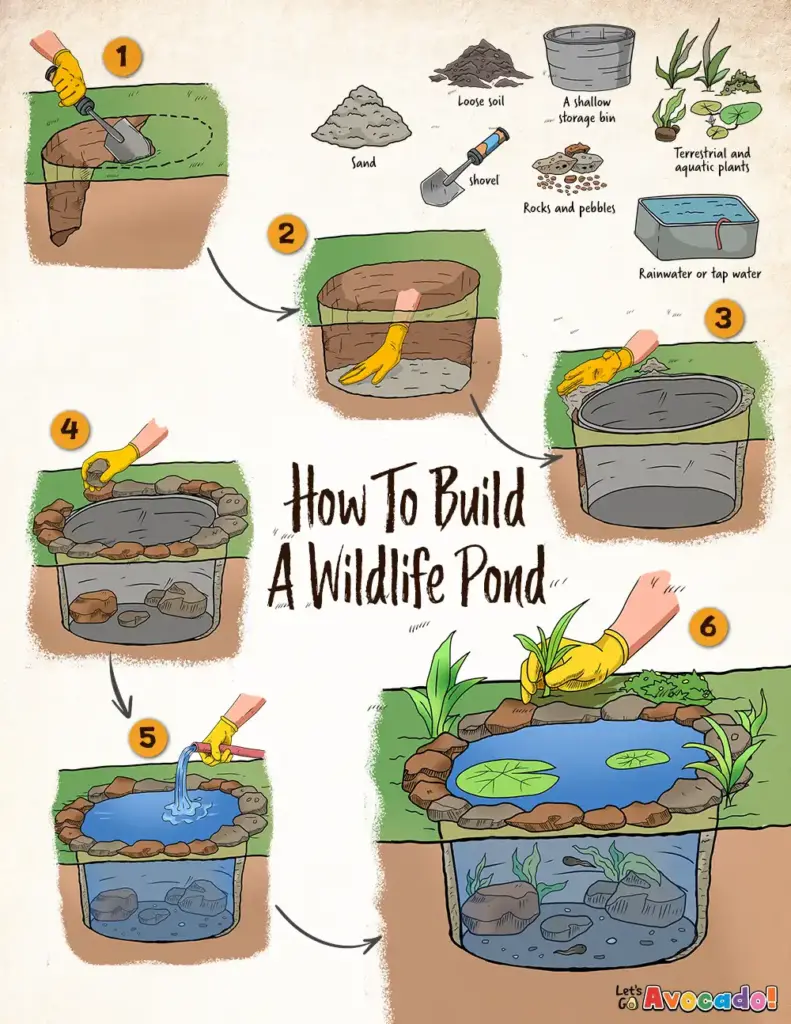
Wildlife Pond Materials & Tools List
Materials Required
- A shallow storage bin or pre-formed pond liner
- Sand
- Loose soil
- Rocks and pebbles
- Rainwater or tap water (left to sit for 24 hours to dechlorinate)
- Aquatic plants
- Terrestrial plants suitable for pond surroundings
Recommended Tools
- Garden spade or shovel
- Gardening gloves
Step 1: Choose the Location and Prepare the Hole
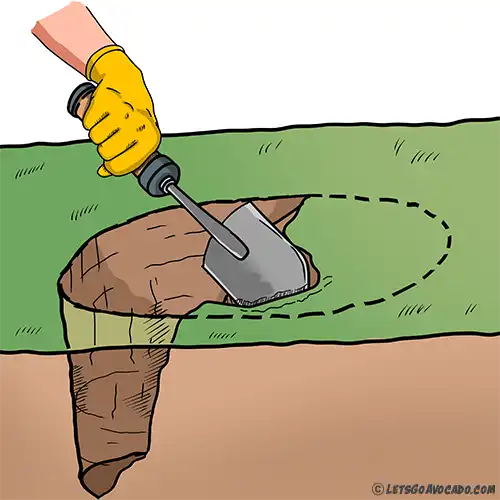
Select a spot in your yard that gets both sun and shade throughout the day. Using a garden spade, dig a hole large enough to fit your storage bin, making the edges level with the ground. Your storage bin will be the container in which you build your wildlife pond.
Step 2: Prepare the Base

Once the hole is dug, remove any sharp rocks or debris. Add a layer of sand to the bottom of the hole and level it to protect the bottom of your wildlife pond, and ensure that your container does not get damaged over time.
Step 3: Place the Container
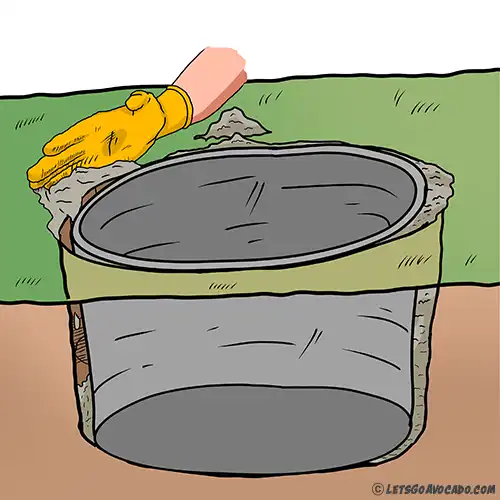
Lower your storage bin or pond liner into the hole. Ensure it sits level with the ground. Fill the gaps between the bin and the soil to secure it in place.
Step 4: Add Rocks and Pebbles
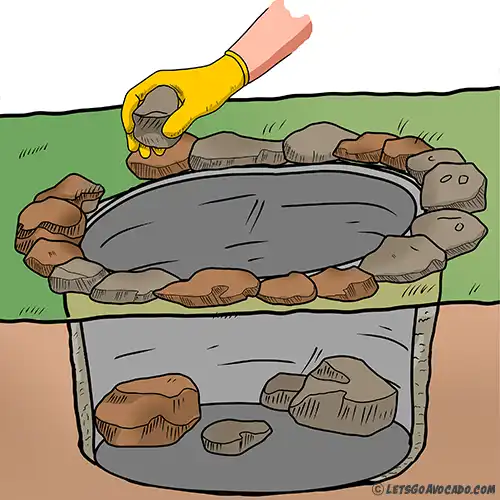
Place rocks and pebbles at the bottom of the bin to create hiding spots for the inhabitants of your wildlife pond. Also, arrange some around the edges on the ground to blend the pond with its surroundings.
Step 5: Fill the Pond
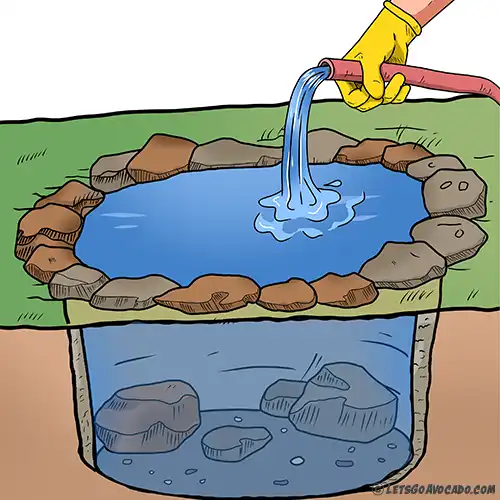
Fill your new wildlife pond with rainwater or tap water that has been left to sit for 24 hours. This helps to remove chlorine and make the water safer for wildlife.
Step 6: Plant Aquatic and Terrestrial Plants
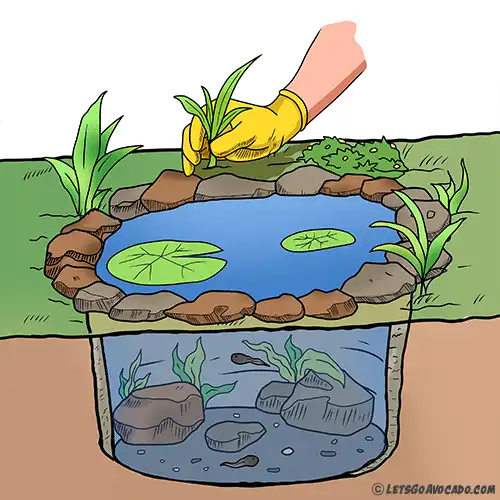
Plant aquatic plants directly into the water in the bin. Around the pond’s edges, plant terrestrial plants to create a natural, inviting habitat for wildlife.
You're Done!
Congratulations, you’ve built a wildlife pond that will give animals and insects a fun place to visit in your backyard! It’s a great way to help these little creatures while learning about nature.
Now comes the fun part – watching animals and insects come to visit! Keep an eye on your pond and see who shows up. You might spot frogs, dragonflies, birds, and more!
Check your pond now and then to make sure it’s clean and safe. If you live where winters don’t get too cold, some animals might use your pond to stay warm. If you see ice forming on top, ask an adult for help. Get some hot tap water in a steel pot and place the pot on the pond to slowly melt the ice.
If you live where the pond might freeze solid, you can drain the pond before winter. Move your aquatic plants indoors, then replant and reset the pond in the spring. This will keep your pond healthy and welcoming all year round.
Engaging Discussion Topics for Building a Bug Hotel with Your Kids
Building a wildlife pond in your backyard is not only a fun and educational project for kids, but it also provides a unique opportunity to explore and learn about nature firsthand. This hands-on experience encourages curiosity, observation skills, and a deeper understanding of ecosystemsAn ecosystem is a community of living organisms, like insects and birds, and non-living components, like water and rocks, that interact with each other in a specific area. Learn More. As you work on the pond together, here are some engaging discussion topics to enhance the learning experience and make the project even more enjoyable.
Visiting Animals
Questions to ask: What animals do you think might come to our pond? Why do you think these animals would like our pond?
Discussion points: Talk about frogs, dragonflies, birds, and other creatures that need water. Discuss the role of the pond in providing a habitat for these animals. Explain how the pond can offer food, shelter, and a place to lay eggs.
Predators at the Pond
Questions to ask: What kinds of animals might hunt at our pond? How can we make sure our pond is a safe place for all animals?
Discussion points: Discuss predators like birds, raccoons, or larger insects. Explain the balance of the ecosystem and how predators are part of it. Talk about ways to observe predators without disturbing the pond.
Seasonal Changes
Questions to ask: How do you think our pond will change in different seasons? What animals might be here in the summer that won’t be here in the winter?
Discussion points: Discuss how the pond will look in spring, summer, fall, and winter. Talk about how some animals might hibernateHibernation is a remarkable survival strategy used by some animals to endure harsh winter conditions. During hibernation, these animals enter a deep, prolonged state of reduced activity, characterized by a significant drop in metabolic processes, including heart rate and body temperature, allowing them to conserve energy and survive through the challenging cold months. or migrateMigration is the regular movement of animals from one place to another, often to find food or better weather. It’s a seasonal trip that many animals take for survival. Learn More. Explain how plants and water levels might change with the seasons.
Observing the Pond
Questions to ask: What’s the best way to watch the animals at the pond without scaring them? Why is it important to observe quietly and from a distance?
Discussion points: Teach kids to be patient and quiet while observing. Suggest using binoculars or a magnifying glass for a closer look. Discuss the importance of not disturbing the habitat.
Keeping the Pond Healthy
Questions to ask: What can we do to keep our pond clean and healthy? Why is it important to take care of the plants and animals at the pond?
Discussion points: Talk about removing debris and checking water quality. Discuss the importance of plants in keeping the pond ecosystem balanced. Explain how a healthy pond helps all the animals that live there.
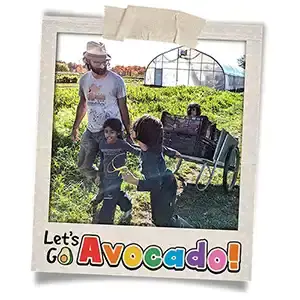
There’s a lot to explore right where we are, in our own neighborhoods and backyards! Join us while we get off the couch and explore the everyday wonders of nature, science, space, engineering, art, and anything else we stumble upon during on our adventures.


